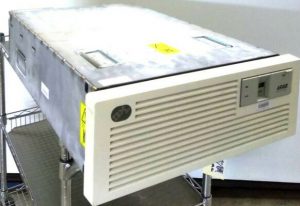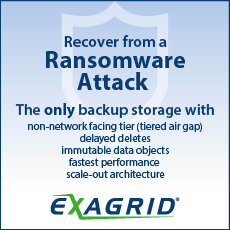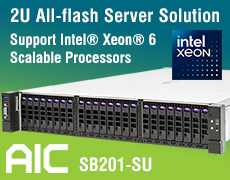History (1992): First IBM RAIDs, for AS/400
4 to 7 HDDs, $42,900 and $56,000 respectively, with 5.82GB maximum
By Jean Jacques Maleval | July 17, 2020 at 2:03 pmIBM Corp. has officially introduced its first RAIDs. They are aimed at high-end AS/400 minicomputers, sales of which, including all models, exceeded 180,000 units worldwide.

The 9337 Disk Array Subsystem comes in 2 HA units with RAID-5 technique and 2 base models without RAID technology, all four using 3.5-inch HDDs, “at a lower cost per megabyte for all models compared to the current 9336 disk units,” said IBM.
The cost is only about 24% over non fail-safe storage, according to IBM.
The two RAID subsystems use a new controller with Intel i960 RISC chip, read ahead cache and 3 identical power modules. If one fails, the other 2 supply 100% of the power needed.
The 9337 attaches to 9406 D and E models. But Big Blue intends to announce support for attachment to 9406 B in the first half of 1993.
These two models, referenced under 110 and 220, use a variation of RAID-5 techniques with 4 to 7 HDDs and a maximum of 5.82GB of usable storage. They are priced at $42,900 and $56,000 respectively and will be available November 13, 1992.
Base models 010 and 020 have no RAID possibility, they contain 2 to 7 HDDs and use respectively 542 and magneto-resistive 970MB drives to provide up to 6.79 GB. They can be upgraded into RAIDS units. The 010 costs $38,900 and the 020 $56,000. They will be available September 25, 1992.
Typical RAID-5 configurations spread the checksum across all drives in the array, including additional disks. One fifth of each drive is used for checksum in an array of 5 drives, one-sixth in an array of 6 drives, etc. Thus, when an additional drive is attached, a save-restore operation must be used to adjust the amount of storage reserved to checksum on each of the drives.
The 9337, however, distributes parity only on a reserved 25% portion of each of the first 4 drives, enough storage to accommodate any additional drives. Thus, no save-restore operation is needed when adding drives to the subsystem.
On another hand, with the RAID-5 technique, when the system writes data on disk, it must go through a read-write operation to calculate the checksum, which takes time. In order to permit the system processor to continue operating, most RAID-5 implementations use storage, although the data is not secure during the read-write operation.
With the 9337, data is written into a buffer memory and also to an “invisible” additional write-assist disk drive, an 8th drive in a 7 disk array. If there is any loss of buffer memory contents before the read-write operation is complete, the data can be read from the write-assist drive.
“It’s the first time, I see the word RAID on a booklet from IBM, even if it did offer disk mirroring. The architecture is interesting with the checksum partition on disks, the possibility to replace a failing disk and the power supply redundancy. But especially, prices are very attractive. Compared with 9336 5.25-inch disks, an average configuration costs 40% less,” comments Dominique Rosset, director, international marketing department of Decision Systems International (Ivrea, Italy), a subsidiary of Olivetti and entirely devoted to peripherals for AS/400s.
In 1990, IBM’s HPC group unveiled a disk array using a controller from Maximum Strategy (San Jose, CA), a RAID-3 for scientific and technical applications attached to an HPPI interface. Big Blue is also a customer of Integra Technologies (Santa Clara, CA), a RAID-5 conceptor.
IBM also announced a new 1.28GB QIC cartridge unit for the entire AS/400 line.
This article is an abstract of news published on the former paper version of Computer Data Storage Newsletter on issue ≠56, published on September 1992.













 Subscribe to our free daily newsletter
Subscribe to our free daily newsletter

